Unfortunately, the Veterinary Medicines Directorate contacted me to tell me it was against the law to advertise this wormer since it was classed as ‘Prescription Only Medicine – Veterinarian, Pharmacist, Suitably Qualified Person (POM-VPS)’. and that ‘Products classed as POM-VPS can only be advertise in publications aimed at professional bodies and not to the general public’.
I was surprised they considered this page as advertising so I spoke to them and they advised me that I should not use the product’s brand name but could say ‘A product containing Flubendazole‘. As a result, I have removed the product name.
Before using medication to worm your chickens, it is best to check they need worming first by using a Worm Count Kit like this one. This is a simple test where a sample is sent off by post and the results are returned to you (usually by email) and will advise you whether or not you should worm your chickens.
In the United Kingdom, a product containing the anthelmintic (wormer) Flubendazole is currently the only licensed in feed product available for chickens. It is very effective at killing worms and their eggs. Worms can cause a huge amount of damage to chickens and cause many health problems. As a rule of thumb, if I have a sick bird, the first thing I consider is whether or not she was wormed recently before exploring other avenues because so many signs of illness can be as a result of worms.
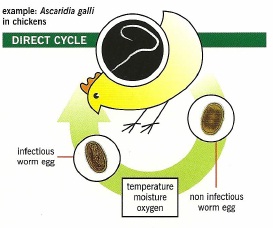
The Direct Life Cycle
Worms lay thousands of eggs in a day that are not always visible in droppings. Eggs then either get picked up by birds scratching around the floor, eating from the ground or in their litter when housed (i.e. picked up directly) or are eaten by earthworms or other ‘hosts’ and passed on to our birds when they themselves get eaten (i.e. indirectly picked up).
These two routes of infection are called the ‘Direct Life-cycle’ and the ‘Indirect Life-cycle’ and can be understood better from the diagrams show that are kindly supplied by Elanco (formerly Janssen Animal Health) where two examples of direct infection and one indirect are shown.
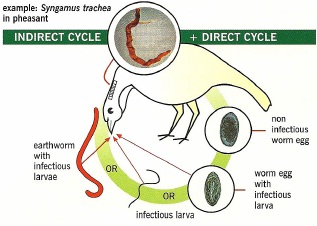
The Indirect Cycle
Worm eggs are destroyed by heat, drought, a hard frost and UV from direct sunlight. For this last reason, I keep grass short in runs over the hotter summer months where my hens graze so that worm eggs can be destroyed. Over the colder winter months or below 10 degrees Centigrade. Worm eggs cannot mature and therefore cannot become infectious so I test my hens with a worm count kit and worm if necessary in the Autumn as the temperature starts to drop and in the Spring when worms become active again.
This product containing Flubendazole that I’m not allowed to name is very effective and after the recommended 7 day treatment, chickens are free of worms and eggs. One thing to remember is that the thousands of eggs deposited via droppings (or coughed up in the case of Gape Worm) are still present in the environment so if the worm infestation is bad, you will need to repeat treatment after 3 weeks to break the cycle before the newly acquired worms (picked up from the eggs) have a chance to mature and lay eggs themselves.
The withdrawal period stated on the tub is nil for eggs from laying hens. This means that you can continue to eat eggs whilst your chickens are being wormed. I’m sure you won’t be eating your hens but they must not be slaughtered for human consumption during treatment. Treated birds may be slaughtered only after 7 days from the last treatment.
Where to buy
If you have a small flock, there is a 60g pack sufficient to treat around 20 large chickens. This comes with a handy little measuring scoop so that you can get the quantity right. One 6 g scoop treats 2 kg of food for chickens. This is the simplest way to worm and if you mix it as I suggest above with a little oil, you can be sure your chooks are getting the required amount. There is also a 240g tub or gamekeeper pack which is more suited to 50 birds or more and lasts longer.
Because of the tight regulations and a license that sellers need to hold (costing over £600 I was told by one company), both of these products are becoming harder and harder to buy. I bought a 60g tub in 1998 and paid £12.50. A year ago I bought another one and it was £70! Serious money.
The product containing Flubendazole can also be purchased pre-mixed in layers pellets on websites such as Amazon in 5 or 20Kg bags which is handy if you don’t want to mix it yourself.
I haven’t seen many places selling this product containing Flubendazole online and vets don’t usually stock it unless they specialise in poultry. The ‘regulations’ are pushing people to go to their vets or other suitably qualified people yet in fact if you chat to chicken keepers, they are being offered offer other large animal wormers containing Ivermectin instead that are often bought in large packs for use on farm animals. These haven’t been tested on chickens so you end up with vets advising anything from a 7 to 30 day withdrawal periods for eggs (depending on the view of the vet of what will be ‘safe’) and although this is perfectly legal, my personal opinion is that this is wrong when there is a tested product available.
How I mix this product containing Flubendazole
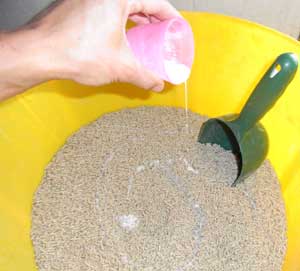
Adding the ‘paste’ to the layers pellets before mixing well
If you but the pack or tub then it will come as a powder that must be mixed with your chickens feed. In order to get this to stick to my layers pellets, I mix it in a small tub with a little Olive or Cod Liver Oil. The ‘paste’ that this makes can then be poured over the right amount of (weighed) pellets in a bucket and mixed well. It sticks to the pellets and won’t fall to the bottom of the bucket like I suspect some of the powder would without the oil.
Remember to wear disposable gloves for safety (yes I know we forgot in the photos!) and follow the ‘operator warnings’ given by the manufacturers below at the end of this page. Remember to dispose of empty containers in the domestic refuse. Used containers should not be recycled.
Pre-mixed layers pellets of course are easier and layers feed lasts for around 6-8 months before starting to spoil so you can use it for further treatments during this time.
How often do I worm my Chickens
As you will see from my routine list of jobs and from what I said above, I check my chickens for worms using a worm count kit twice per year as a preventative measure. Following the results, I worm if necessary but I also worm new birds that we add to our flock or if I become suspicious of worms / ill thrift.
I rotate the runs my birds use so there is no build up of worms. I would suggest you check for worms every 3 months if your birds are on the same ground continuously.
In between times, I sometimes use Verm-X and Apple Cider Vinegar to help keep worm numbers down as well as keeping the grass short in the summer months to allow UV from the sun to kill worm eggs.
You can read more about worms on my worming chickens page

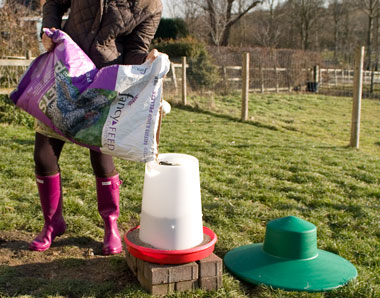
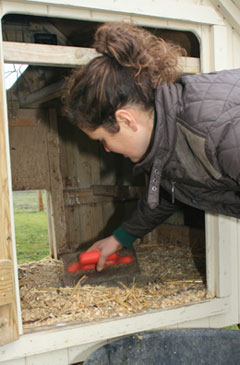
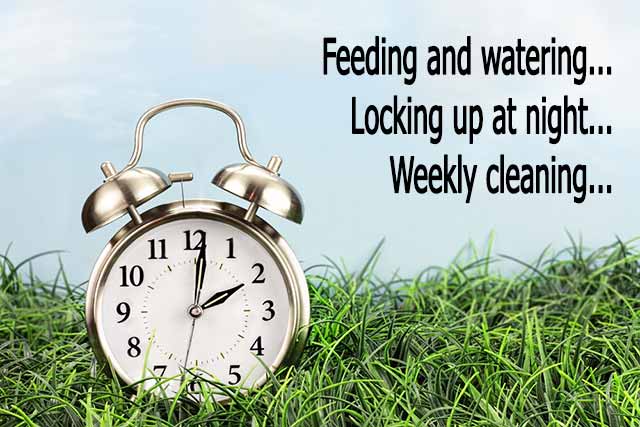
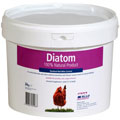
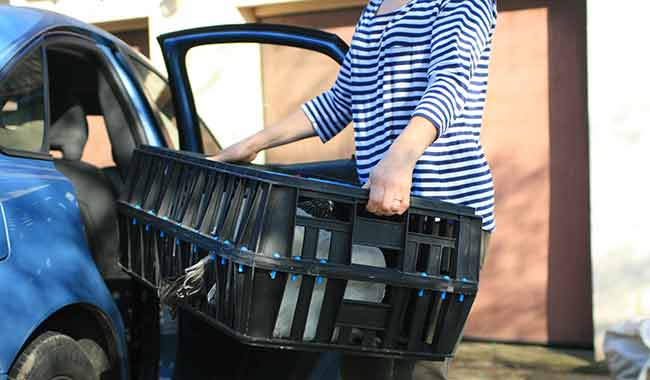
We are just about to treat our four girls with Flubenvet, for the first time. However, we found the instructions appertaining to the quantity each bird should have to be a little ambiguous. How much powder would you recommend for each girl on a daily basis and should we isolate them in turn until each bird has consumed her dose? I am a little worried that if we mix the medicine up in their food that one chicken may result in taking in more than the others.
You can’t use a quantity per bird. The dosage is for a given quantity of food – this gives the right percentage of Flubenvet in the feed and means that large birds that have a bigger body mass eat more and get the right dose and small birds eat less and have less Flubenvet.
If you think about it – with any drugs, vets will usually weigh the animal and then tell you how much of whatever it is they need as a dose. This is the same sort of thing.
Some birds will eat more than others yes but that’s ok. Over the 7 day treatment period, assuming there are no problems with hens getting access to feed because of bullying (in which case you’ve got other problems anyway) then they should all consume their normal amount of feed and the right amount of Flubenvet that they need.
Flubenvet is the only licensed in feed wormer and this is most probably because of the huge barrier to entry for others – cost of testing it. Don’t worry, I’m sure that the strict safety rules have a good margin for different hens appetites and they will be fine eating a little more or less food.
I have 3 bantams and they eat less than 1kg of pellets a week between them. My vet recommended half a spoonful of flubenvet to 4kg of feed, but they’d never get through that in a week! How much flubenvet would you recommend I add to their feed?
Thanks
For any medication, you need to follow the dosage on the instructions for it to be safe and to work as the manufacturer intended.
Think of it as a certain amount of Flubenvet in a certain amount of feed gives a certain percentage. If you want less then you need to reduce both amounts but keep the percentage the same.
A very simple example of this is mixing orange squash. You add a certain amount of concentrate to the water. If you want half the amount of squash, you put half the water and half the concentrate you put in before. The squash is the same strength but you have half the amount to drink!
I hope this makes sense… so look at the pack and the recommended dose and if you want half the amount of medicated feed, half the weight of the feed and half the amount of Flubenvet. You get the same percentage mixed with the feed – just less medicated feed.
Hi great to have found you. We have two 11 week old chickens hatched from artificially incubated eggs living in the garden and have just added 2 farm bought 12 week old chickens to our flock. What age should we start worming the hens and is it best to do routinely before problems arrive?
The general advice is to worm them when you put them out to ‘pasture’ for the first time however I would say it really depends on the environment and the chances of them picking up worms.
If you have older hens on this ground or the ground is well used, I would worm them, however from what you describe, I would not worry, unless you see signs of worms in droppings or ill health.
I normally worm my hens every 4 to 6 months but I do try to help them in between times by using Verm-X and feeding some fresh crushed garlic in their water and I keep the grass where they graze cut short in the summer so that the UV from the sun kills worm eggs.
If it were me, I would consider worming them for the first time in the Autumn if there are no signs of worms.
Hi
I have a flock of 8 birds including one cockerel. About 10 days ago I noticed one of the birds was gasping and after research concluded on gapeworm and sourced Flubenvet. I mixed a week’s feed as per the instructions and we’ve just finished day 6. She doesn’t sound any better yet and wondered how quickly the Flubenvet should have acted?
Flubenvet usually kills off most worms within days from my experience.
There are other things that can be confused with a Tracheal rattle / gasping such as you describe and a good poultry vet will certainly help. The most common in chickens is respiritory infection, usually a secondary infection caused by a number of other underlying diseases such as Mycoplasma Gallisepticum. If this is the case the vet will probably prescribe Tylan, a broad spectrum antibiotic.
Can this product be used for dewoeming racing pigeons?
I don’t keep pigeons but the instructions do not state pigeons as a target species. I would look at Harkamectin here: http://tinyurl.com/Harkamectin
Where can I buy Flubevet in the United States
To my knowledge, it’s not possible to buy Flubenvet in the U.S.
I would check with your local vet for the most suitable wormer – it is probably a medication containing Ivermectic.